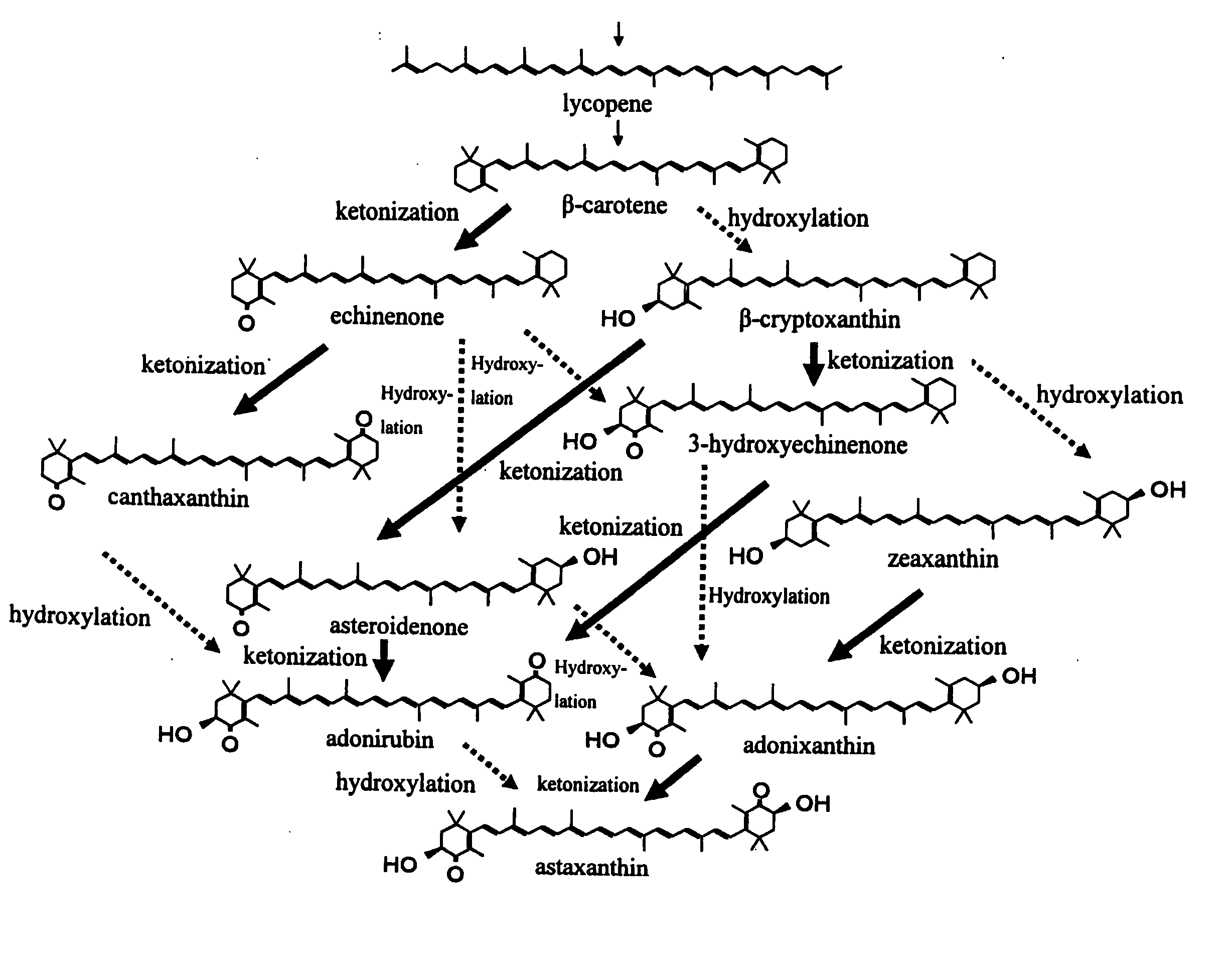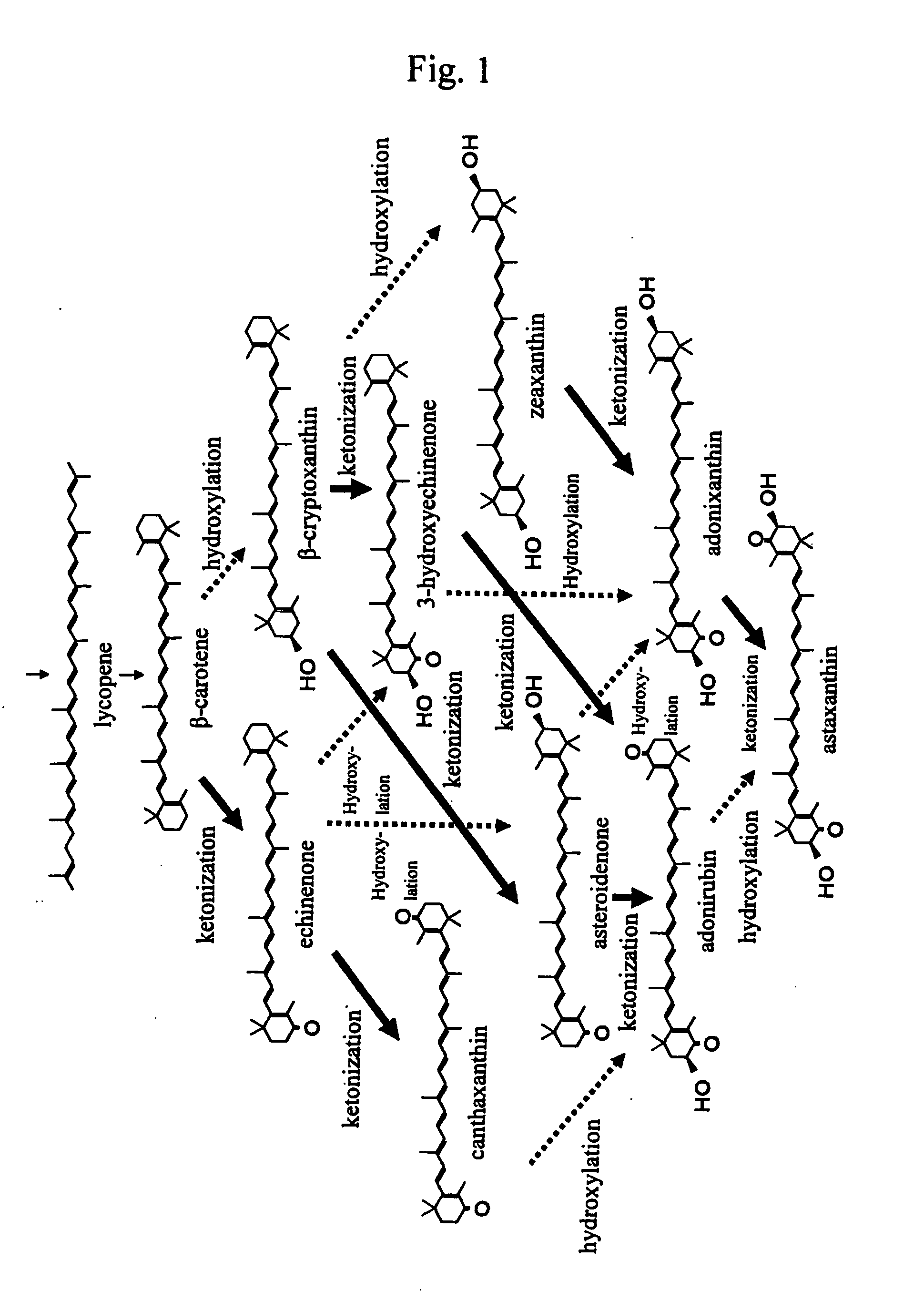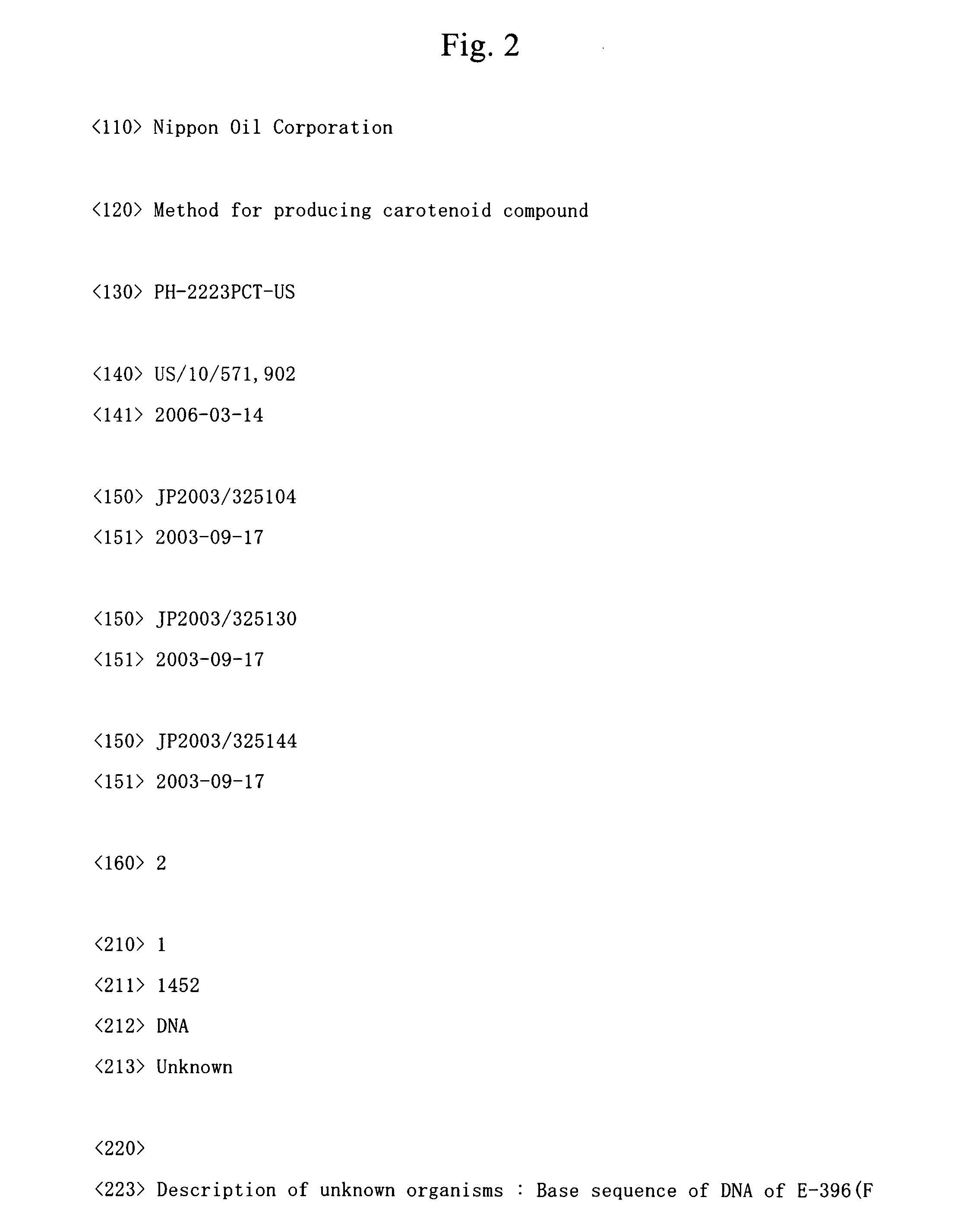Process for producing carotenoid compound
a carotenoid and microorganism technology, applied in the field of microorganism-based process for producing zeaxanthin, carotene, lycopene, or carotenoid mixture, can solve the problems of lycopene safety problems, inability to conventionally cultivate using microorganisms, and requiring too much cos
- Summary
- Abstract
- Description
- Claims
- Application Information
AI Technical Summary
Benefits of technology
Problems solved by technology
Method used
Image
Examples
example 1
[0073] A strain, E-396, (FERM BP-4283) was subjected to mutation treatment with 200 mg / L of NTG (N-methyl-N′-nitro-N-nitrosoguanidine) under standing at a temperature of 28° C. for 30 minutes. In a test tube with an inner diameter of 18 mm was placed 6 ml of a medium comprising the composition shown in Table 1 which was then subjected to steam sterilization at 121° C. for 15 minutes to make a test tube medium. There were selected 200 mutant colonies taking on yellow to orange color, each of which then was, in an amount of one platinum loop, inoculated on the test tube medium and subjected to reciprocating shaken culture at 330 rpm and 28° C. for 4 days. These cultures were then subjected to centrifugal separation, followed by analyzing carotenoid compounds in the resultant cell bodies using high performance liquid chromatography, with the result of providing one strain having a 60 mass % or more product proportion of zeaxanthin to the whole production amount of carotenoids. The resu...
example 2
[0076] A strain, E-396 (FERM BP-4283), was subjected to mutation treatment with 200 mg / L of NTG (N-methyl-N′-nitro-N-nitrosoguanidine) under standing at a temperature of 28° C. for 30 minutes. In a test tube with an inner diameter of 18 mm was placed 6 ml of a medium comprising the composition shown in Table 1 which was then subjected to steam sterilization at 121° C. for 15 minutes to make a test tube medium. There were randomly selected 1,500 mutant colonies, each of which then was, in an amount of one platinum loop, inoculated on the test tube medium and subjected to reciprocating shaken culture at 330 rpm and 28° C. for 4 days. These cultures were then subjected to centrifugal separation, followed by analyzing carotenoid compounds in the resultant cell bodies using high performance liquid chromatography, with the result of providing one strain being less than 10 mass % in the product proportion of each of the produced echinenone, canthaxanthin, 3-hydroxyechinenone, asteroidenone...
example 3
[0077] A strain, E-396 (FERM BP-4283), was subjected to mutation treatment with NTG, followed by selecting colonies having a deep color tone of red to provide a mutant strain, Y-559, having an improved productivity of astaxanthin. The Y-559 strain was further subjected to mutation treatment with 150 mg / L of NTG. In a test tube with an inner diameter of 18 mm was placed 6 ml of a medium comprising the composition shown in Table 1 which was then subjected to steam sterilization at 121° C. for 15 minutes to make a test tube medium. There were selected 350 mutant colonies taking on yellow to orange color, each of which then was, in an amount of one platinum loop, inoculated on the test tube medium and subjected to reciprocating shaken culture at 330 rpm and 28° C. for 5 days. These cultures were then subjected to centrifugal separation, followed by analyzing carotenoid compounds in the resultant cell bodies using high performance liquid chromatography, with the result of providing one s...
PUM
| Property | Measurement | Unit |
|---|---|---|
| temperature | aaaaa | aaaaa |
| temperature | aaaaa | aaaaa |
| temperature | aaaaa | aaaaa |
Abstract
Description
Claims
Application Information
 Login to View More
Login to View More - R&D
- Intellectual Property
- Life Sciences
- Materials
- Tech Scout
- Unparalleled Data Quality
- Higher Quality Content
- 60% Fewer Hallucinations
Browse by: Latest US Patents, China's latest patents, Technical Efficacy Thesaurus, Application Domain, Technology Topic, Popular Technical Reports.
© 2025 PatSnap. All rights reserved.Legal|Privacy policy|Modern Slavery Act Transparency Statement|Sitemap|About US| Contact US: help@patsnap.com



